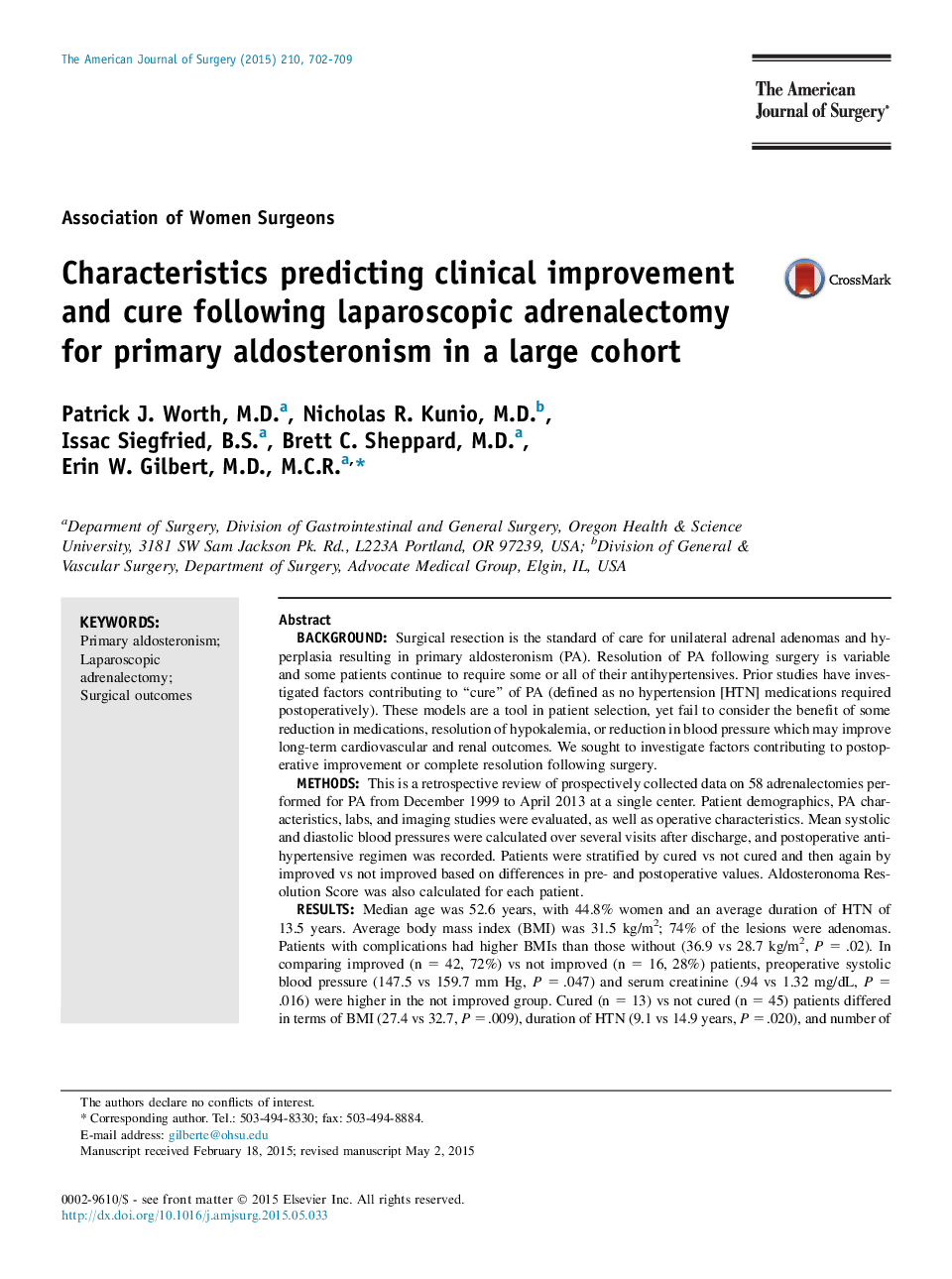| Article ID | Journal | Published Year | Pages | File Type |
|---|---|---|---|---|
| 4278326 | The American Journal of Surgery | 2015 | 8 Pages |
BackgroundSurgical resection is the standard of care for unilateral adrenal adenomas and hyperplasia resulting in primary aldosteronism (PA). Resolution of PA following surgery is variable and some patients continue to require some or all of their antihypertensives. Prior studies have investigated factors contributing to “cure” of PA (defined as no hypertension [HTN] medications required postoperatively). These models are a tool in patient selection, yet fail to consider the benefit of some reduction in medications, resolution of hypokalemia, or reduction in blood pressure which may improve long-term cardiovascular and renal outcomes. We sought to investigate factors contributing to postoperative improvement or complete resolution following surgery.MethodsThis is a retrospective review of prospectively collected data on 58 adrenalectomies performed for PA from December 1999 to April 2013 at a single center. Patient demographics, PA characteristics, labs, and imaging studies were evaluated, as well as operative characteristics. Mean systolic and diastolic blood pressures were calculated over several visits after discharge, and postoperative antihypertensive regimen was recorded. Patients were stratified by cured vs not cured and then again by improved vs not improved based on differences in pre- and postoperative values. Aldosteronoma Resolution Score was also calculated for each patient.ResultsMedian age was 52.6 years, with 44.8% women and an average duration of HTN of 13.5 years. Average body mass index (BMI) was 31.5 kg/m2; 74% of the lesions were adenomas. Patients with complications had higher BMIs than those without (36.9 vs 28.7 kg/m2, P = .02). In comparing improved (n = 42, 72%) vs not improved (n = 16, 28%) patients, preoperative systolic blood pressure (147.5 vs 159.7 mm Hg, P = .047) and serum creatinine (.94 vs 1.32 mg/dL, P = .016) were higher in the not improved group. Cured (n = 13) vs not cured (n = 45) patients differed in terms of BMI (27.4 vs 32.7, P = .009), duration of HTN (9.1 vs 14.9 years, P = .020), and number of preoperative antihypertensives (2.1 vs 3.7, P = .002). Aldosteronoma Resolution Score was significantly higher in cured patients (3.2 vs 1.0, P < .01).ConclusionsA significant number of patients who are not cured by adrenalectomy for PA will still benefit from surgery. Obesity, duration of HTN, and number of medications may predict cure, yet fail to detect a population of patients with overall improvement. Attention to serum creatinine may help in distinguishing this population of patients.
